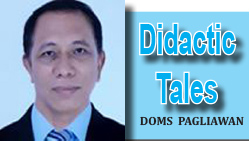Some newly elected local officials recently assumed office under a cloud of feuds and unfinished projects—their predecessors left behind a trail of unpaid contractors and festering garbage in the poblacion. The new leadership promised change, as they always do, but whether they will clean up the town or just repaint the walls remains to be seen.
This is the reality across Eastern Visayas: a new crop of mayors, vice mayors, and councilors have taken their seats, and we dare not hope blindly—we must hope wisely.
Every election is a reset button, but it’s not always a reset of problems. Often, it’s just a change of faces—names reshuffled within dynasties, allies taking turns in power like musical chairs at a family reunion. In places like Eastern Samar and Southern Leyte, many LGUs are now helmed by first-time officials, some with noble intentions, others riding the coattails of their surnames. The people’s jubilation, marked by fireworks and brass bands, is slowly giving way to an awkward quiet—the kind that comes after the carnival leaves and the potholes are still there.
What makes local leadership both thrilling and terrifying is its immediacy. Unlike national officials, mayors and governors don’t get to hide behind speeches and spokespersons. Their failures rot on street corners, stink in public markets, and drown in clogged canals. A broken barangay road or a botched relocation site cannot be shrugged off with “We’re still studying it.” There’s no room for arrogance here; the people know where their leaders live, and they can knock on their gates.
But here lies the rub—some of these new leaders, intoxicated by the novelty of power, walk into town halls like gods arriving at their temples. They come with entourages, not agendas. Their first acts are often not executive orders or ordinances, but renovations of their offices and changes in their official Facebook profile photos. They speak of “transparency,” yet refuse to hold public consultations, claiming they already “know what the people need.” One wonders if they ran for office to serve or to pose.
Still, I do not want to be unkind. In fairness, some new officials mean business. Some mayors have begun revisiting procurement protocols and have hired a municipal agriculturist who actually visits farms. They consulted fisherfolk before proposing coastal infrastructure upgrades. Such moments are rare but real, and they remind us that new blood in governance is not always a curse—it can be a cure, if done with sincerity, sobriety, and skill.
Yet the work is harder than slogans make it seem. Many LGUs are buried in debt, hamstrung by internal politics, or controlled by invisible puppet masters—the retired but still powerful politicians pulling strings from behind. Even with fresh faces, the bureaucracy can be a swamp. Staff appointments are traded like favors. Public funds are spoken of as if they were private allowances. And so, we watch: will these new leaders drain the swamp or settle into it?
It’s also on us—the governed—to keep asking questions. It’s easy to celebrate new leadership on Day One, post their photos with heart emojis, and share their campaign jingles one last time. But the harder, more crucial task is to monitor budgets, attend barangay assemblies, question dubious projects, and demand regular reports. Leadership is not magic. It’s a job, and like any job, it must come with performance reviews.
If we are to wish the best for Eastern Visayas, it’s not enough to hope these new officials “do well.” We must expect and demand that they work; that they solve problems rather than paint over them; that they listen more than they talk; that they carry the burden of public office not as a badge of status but as a call to service. True change won’t arrive through slogans—it will arrive, slowly and stubbornly, through honest work, public scrutiny, and perhaps, a little grace.




